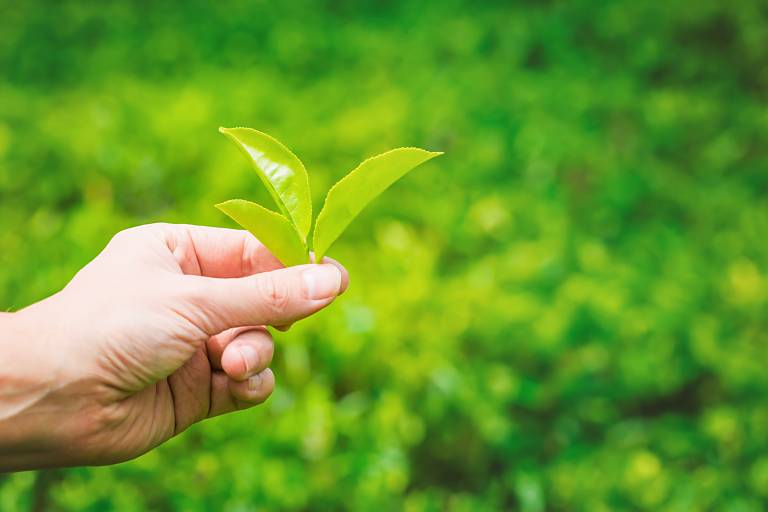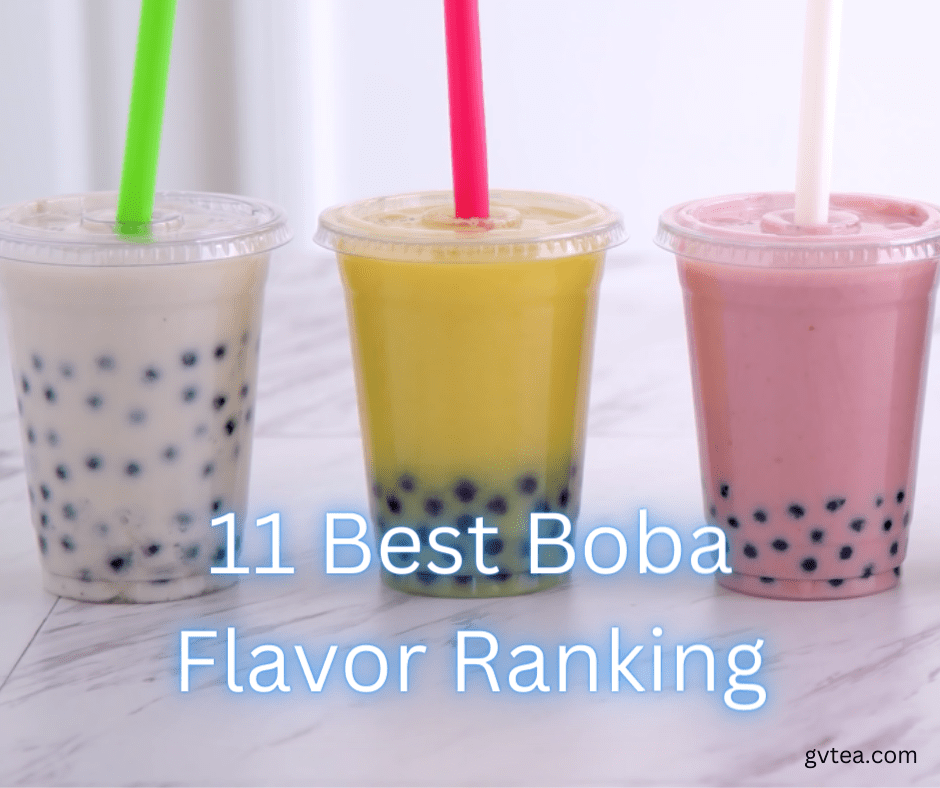Tea 101: A Quick Guide to Understanding Different Types of Tea
What is tea?
Understanding the Camellia Sinensis plant
Tea is made from the leaves of the Camellia Sinensis plant, which is native to Southeast Asia but is now widely grown in other parts of the world as well, including China, India, and Kenya. The plant can grow up to 30 feet in height and has shiny, dark green leaves that are used to make a variety of different types of tea.
Tea processing methods
After the tea leaves are harvested, they undergo a series of processing steps that determine the final flavor and aroma of the tea. The main types of tea processing methods are:
- Withering: The leaves are spread out to dry and lose some of their moisture.
- Rolling: The leaves are rolled to break down the cell walls and release their natural oils.
- Oxidizing: The leaves are exposed to air, which causes them to turn brown and develop their characteristic flavor.
- Firing: The leaves are heated to stop the oxidation process and dry them out completely.
- Sorting: The leaves are sorted by size, shape, and quality to produce different grades of tea.
Tea grades
Tea is graded according to its quality, which is based on factors such as the size and shape of the leaves, the degree of oxidation, and the overall flavor and aroma. The highest grades of tea are typically made from the youngest and most tender leaves, while lower grades may contain older leaves or stems as well.
Types of Tea
Green tea
Green tea is one of the most popular types of tea and is known for its light, refreshing flavor and high antioxidant content. Green tea is made from unoxidized leaves and is rich in catechins, which are natural compounds that have been linked to various health benefits, including reduced risk of heart disease, cancer, and Alzheimer’s disease.
Black tea
Black tea is made from fully oxidized leaves and is known for its bold, full-bodied flavor and high caffeine content. Some of the most popular varieties of black tea include Earl Grey, Darjeeling, and Assam tea.
Oolong tea
Oolong tea is a partially oxidized tea that falls somewhere between green and black tea in terms of flavor and caffeine content. Oolong tea is known for its complex, floral flavor and is often compared to wine in terms of its depth and complexity.
White tea
White tea is made from the youngest and most tender leaves of the Camellia Sinensis plant, which are typically picked before they are fully mature. White tea is known for its delicate, subtle flavor and is low in both caffeine and tannins.
Pu-erh tea
Pu-erh tea is a fermented tea that is known for its earthy, pungent flavor and unique aging process. Pu-erh tea is believed to have various health benefits, including improved digestion and reduced cholesterol levels.
Herbal tea
While technically not a true tea, herbal tea is a popular alternative to traditional tea that is made by steeping various herbs and spices in hot water. Some of the most popular herbal tea varieties include chamomile, peppermint, ginger, turmeric, hibiscus, lemon balm, lavender, and rosehip, each with its own unique flavor and health benefits.
Chamomile tea
Chamomile tea is made from dried chamomile flowers and is known for its calming, soothing properties. Chamomile tea is often used as a natural remedy for insomnia and anxiety.
Peppermint tea
Peppermint tea is made from fresh or dried peppermint leaves and is known for its refreshing, minty flavor and natural digestive properties. Peppermint tea is often used to ease nausea, bloating, and other digestive issues.
Ginger tea
Ginger tea is made from fresh or dried ginger root and is known for its spicy, warming flavor and natural anti-inflammatory properties. Ginger tea is often used to treat nausea, colds, and other respiratory issues.
Turmeric tea
Turmeric tea is made from fresh or dried turmeric root and is known for its bright yellow color and natural anti-inflammatory properties. Turmeric tea is often used to treat arthritis, digestive issues, and other inflammatory conditions.
Hibiscus tea
Hibiscus tea is made from dried hibiscus flowers and is known for its tart, fruity flavor and high antioxidant content. Hibiscus tea is often used to reduce blood pressure and improve heart health.
Lemon balm tea
Lemon balm tea is made from fresh or dried lemon balm leaves and is known for its calming, soothing properties. Lemon balm tea is often used to treat anxiety, insomnia, and other nervous system disorders.
Lavender tea
Lavender tea is made from fresh or dried lavender flowers and is known for its floral, relaxing properties. Lavender tea is often used to treat insomnia, anxiety, and other stress-related conditions.
Rosehip tea
Rosehip tea is made from dried rosehips, which are the fruit of the rose plant. Rosehip tea is known for its sweet, tart flavor and high vitamin C content. Rosehip tea is often used to boost immunity, improve skin health, and reduce inflammation.
Caffeine in Tea
How much caffeine is in each type of tea?
The caffeine content of tea varies depending on the type and grade of tea, as well as the brewing method and serving size. Generally, black tea has the highest caffeine content, followed by oolong tea, green tea, and white tea. Herbal teas are naturally caffeine-free.
The effects of caffeine on the body
Caffeine is a natural stimulant that can help improve mental alertness and physical performance. However, excessive caffeine intake can cause side effects such as insomnia, anxiety, and jitteriness. It’s important to consume caffeine in moderation and to be aware of the caffeine content of your drinks.
Caffeine-free tea options
If you’re looking to reduce your caffeine intake or avoid it altogether, there are plenty of caffeine-free tea options available, including herbal teas, rooibos tea, and decaf tea.
Brewing Tea
How to brew loose leaf tea
When brewing loose leaf tea, it’s important to use a good-quality tea infuser or strainer to prevent the tea leaves from getting into your cup. To brew loose leaf tea, simply add the desired amount of tea to your infuser or strainer, pour hot water over the leaves, and let steep for the recommended amount of time.
How to brew tea bags
Brewing tea bags is a quick and convenient way to enjoy a cup of tea. To brew tea bags, simply place the tea bag in your cup or teapot, pour hot water over the bag, and let steep for the recommended amount of time.
Tea brewing accessories
There are many different accessories available to help make your tea brewing experience more enjoyable, including tea infusers, teapots, and travel mugs. Whether you’re a casual tea drinker or a true tea connoisseur, investing in high-quality accessories can help you get the most out of your tea drinking experience.
Popular Tea Varieties
Earl Grey tea
Earl Grey tea is a type of black tea that is flavored with bergamot, a type of citrus fruit. Earl Grey tea is known for its distinctive floral and fruity flavor and is often enjoyed with a splash of milk or honey.
Darjeeling tea
Darjeeling tea is a type of black tea that is grown in the Darjeeling district of West Bengal, India. Darjeeling tea is known for its delicate, floral flavor and is often compared to fine wine in terms of its complexity and nuance.
Rooibos tea
Rooibos tea is a type of herbal tea that is made from the leaves of the rooibos plant, which is native to South Africa. Rooibos tea is known for its sweet
FAQ:
Q: What is Tea 101?
A: Tea 101 is a quick guide to understanding different types of tea. It covers different tea types such as oolong, green tea, black tea, white tea, herbal tea, and pu-erh.
Q: What is the difference between oolong, green tea, black tea, white tea, and herbal tea?
A: Oolong tea is partially oxidized, while green tea is unoxidized. Black tea is fully oxidized, and white tea is the least processed. Herbal tea is not actually tea made from the Camellia Sinensis plant, but rather an infusion of herbs, spices, and fruits.
Q: What is pu-erh tea?
A: Pu-erh tea is a fermented tea produced in the Yunnan province of China. It undergoes a unique process of microbial fermentation and aging, resulting in a rich and earthy flavor profile.
Q: What is matcha?
A: Matcha is a type of green tea that is finely ground into a powder. It is traditionally used in Japanese tea ceremonies and has a vegetal, slightly bitter taste.
Q: How is tea made?
A: Tea is made from the buds of the tea plant, Camellia Sinensis. The buds are picked and then processed using various tea processing methods, including withering, rolling, oxidation, and firing.
Q: What is purple tea?
A: Purple tea is a relatively new tea variety produced in Kenya. It is named for the purple hue of the buds of the tea plant and has a unique flavor profile and antioxidant properties.
Q: What are the main categories of tea?
A: The main categories of tea are black, green, oolong, white, and herbal.
Q: What is the tea research foundation of Kenya?
A: The Tea Research Foundation of Kenya is a research institution that focuses on tea producing regions of East Africa. It is responsible for developing new tea varieties and production methods and promoting the growth of tea in the region.
Q: How is tea produced in China and Sri Lanka?
A: In China, tea is produced using a wide variety of processing methods, including pan-firing and oven-drying. In Sri Lanka, tea is typically produced using a process called withering, followed by rolling and oxidation.
Q: What is the origin of tea?
A: The origin of tea is believed to be in China, where it has been consumed for thousands of years. Today, tea is grown and consumed all over the world.
Tea is one of the world’s most popular beverages, with a long history and a wide range of flavors and health benefits. Whether you’re a passionate tea enthusiast or just looking to learn more about this fascinating drink, this guide will provide you with all the information you need to know about different types of tea, brewing methods, and popular tea varieties.











Pingback: How Do You Drink Bubble Tea? | GVTEA
Pingback: Do Boba Tea And Coffee Work Together? | GVTEA